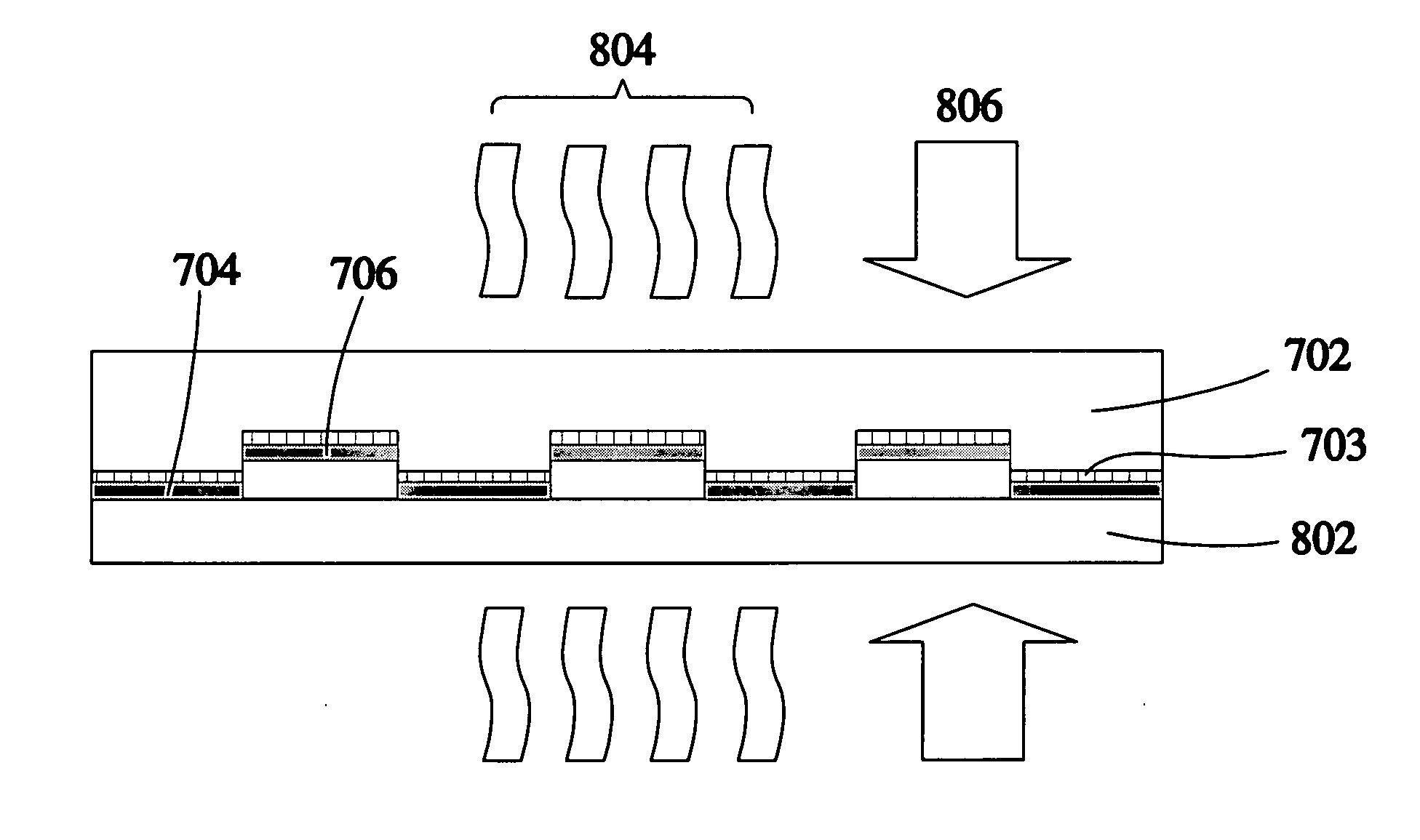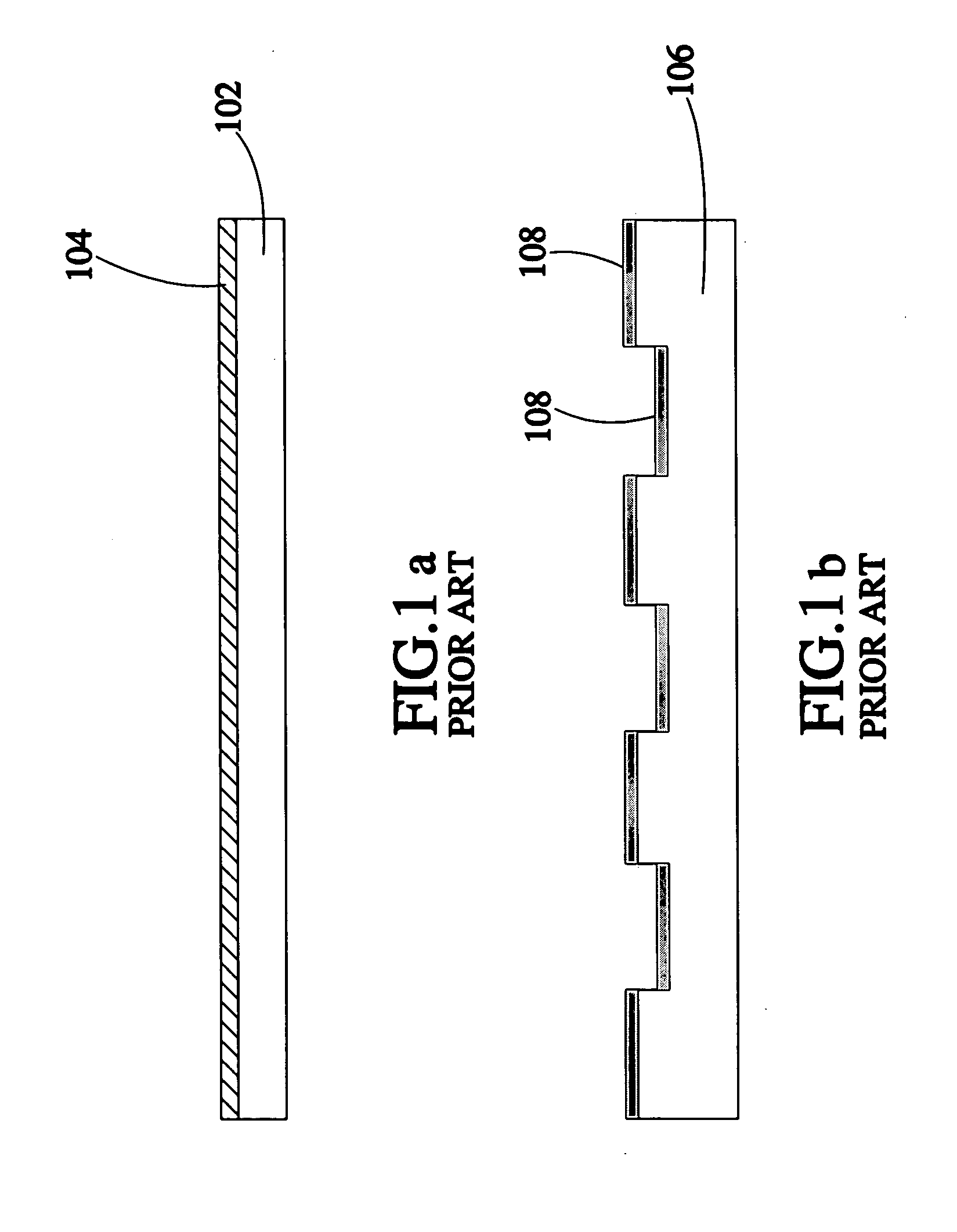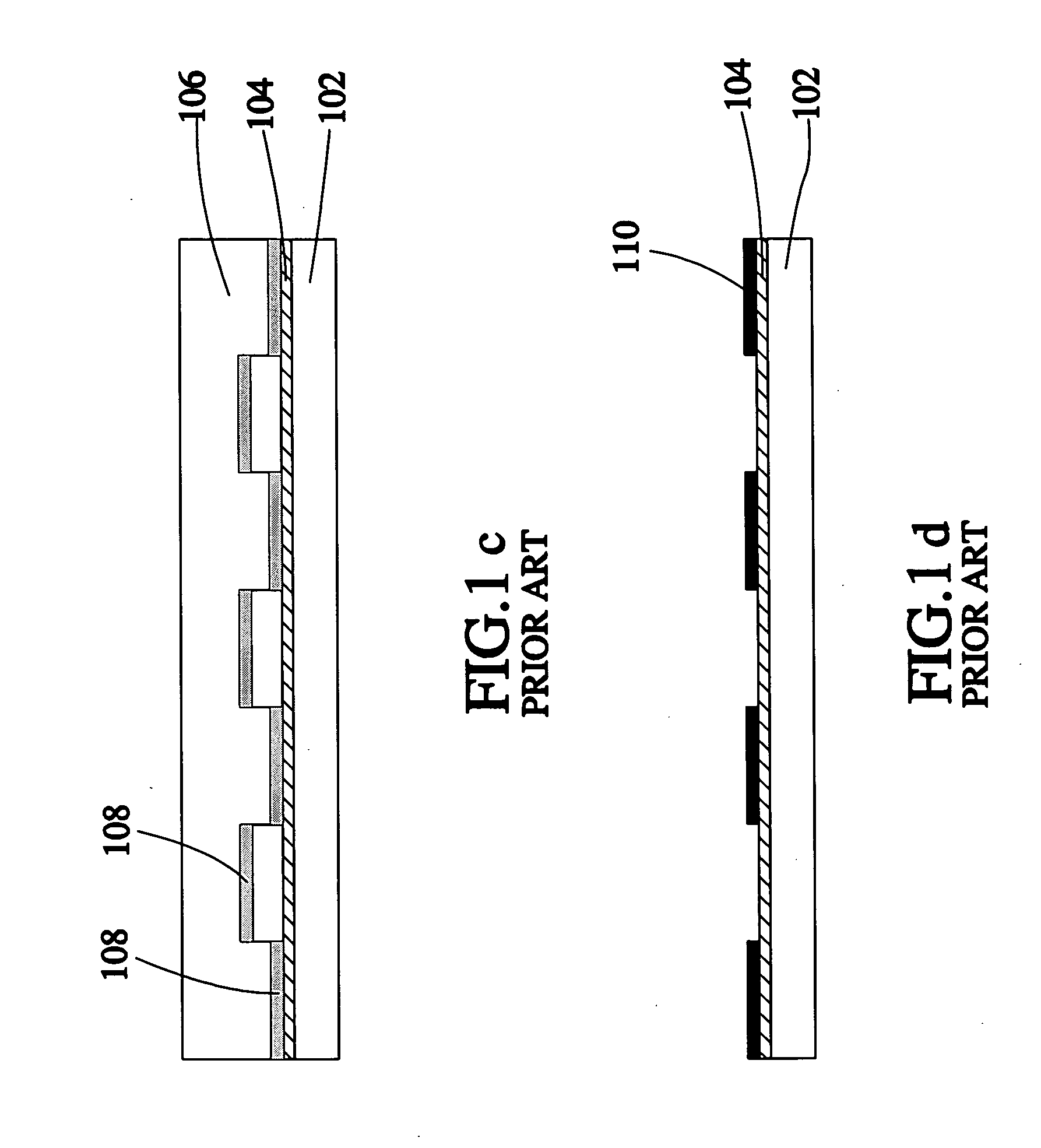Physisorption-based microcontact printing process capable of controlling film thickness
a micro-contact printing and printing technology, applied in the field of physical sorption-based micro-contact printing technology, can solve the problems of ineffective control of the amount of ink molecules applied, let alone the thickness control of the printed pattern, and achieve the effects of reducing surface roughness and residual internal stress, improving surface smoothness, and improving surface smoothness
- Summary
- Abstract
- Description
- Claims
- Application Information
AI Technical Summary
Benefits of technology
Problems solved by technology
Method used
Image
Examples
Embodiment Construction
[0044]The present invention proposes a physisorption-based microcontact printing process capable of controlling film thickness, including three phases of inking, printing, and demolding. The inking phase further has two steps of surface wetting and thin-film growth. The surface wetting step is optional, depending on whether it is necessary. When it is necessary, a wetting layer is deposited onto a stamp to facilitate successful growth of a thin film of the ink molecules on the stamp in the next thin-film growth step. In the following preferred embodiments, the surface-wetting step is required.
[0045]FIG. 7a shows a pre-patterned stamp 702 made of a material having very low surface free energy, such as PDMS. Referring to FIG. 7b, a wetting layer 703 is formed on a surface of the stamp 702 after surface wetting. The wetting layer 703 can be made of highly evaporative solvent, like toluene, or of highly reactive function group generated after surface treatment of the stamp 702. For exam...
PUM
 Login to View More
Login to View More Abstract
Description
Claims
Application Information
 Login to View More
Login to View More - R&D
- Intellectual Property
- Life Sciences
- Materials
- Tech Scout
- Unparalleled Data Quality
- Higher Quality Content
- 60% Fewer Hallucinations
Browse by: Latest US Patents, China's latest patents, Technical Efficacy Thesaurus, Application Domain, Technology Topic, Popular Technical Reports.
© 2025 PatSnap. All rights reserved.Legal|Privacy policy|Modern Slavery Act Transparency Statement|Sitemap|About US| Contact US: help@patsnap.com



